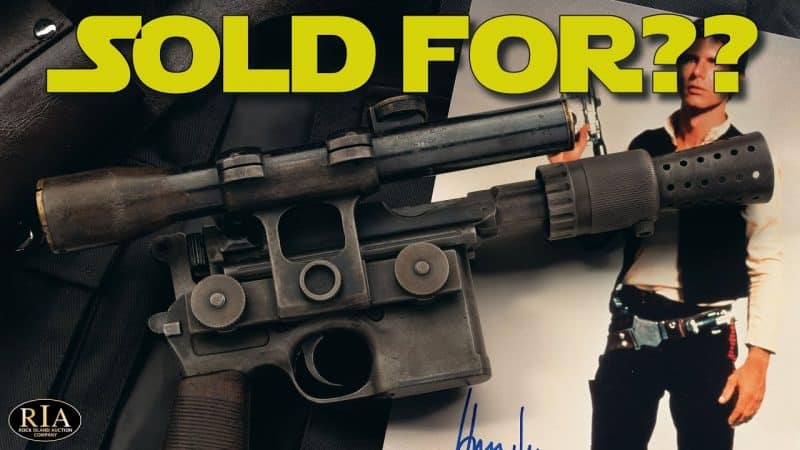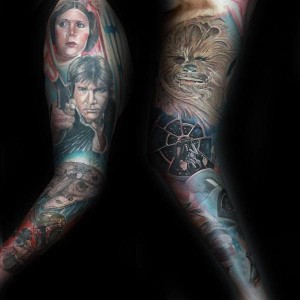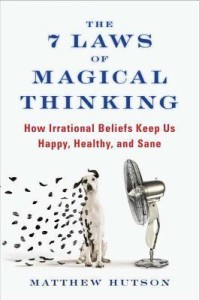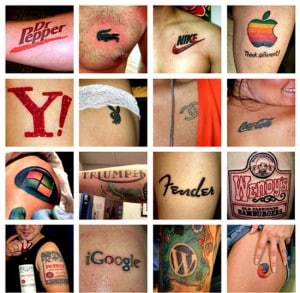
The prop “blaster” wielded by Harrison Ford in Star Wars just sold at auction for $1,057,500.
Someone spent over a million dollars for a toy gun.
Why?
Emotional Attachment.
Obviously, how much emotional attachments are “worth” depends on the strength of the emotions and the level of attachment.
Star Wars shook the pop-cultural firmament for decades.
How can a brand for everyday consumer products even hope to compete?
Yes, Luke, Commercial Brands Can Compete
Well, for comparison, Coca-Cola’s brand was valued at $87.6 Billion.
And that’s not for the hard assets of the company. That’s just for the brand itself.
So, yes, commercial brands can easily compete with Hollywood when it comes to building value in intangible assets.
[Although, for a fair comparison, Disney did pay $4.05 Billion for the Star Wars franchise]
But why?
Why is Coke’s brand worth that much?
 Because soft drinks are still a mind-bendingly huge business — $253 Billion in the U.S. alone.
Because soft drinks are still a mind-bendingly huge business — $253 Billion in the U.S. alone.
Coke’s brand ensures that people are more likely to choose and request Coke than competitors, while eagerly spending over twice as much money to get Coke.
For example, it’s about $6.25 for a 24-pack of Sam’s Cola vs. $6.98 for a 12-pack of Coke.
Do the math, and Coke’s brand nets them 2.2X more for their flavored sugar water.
But, heck, spending an extra 25 cents per can of soda is quite literally chump change compared to spending a cool million for a movie prop.
And that’s my point: your task in brand-building is laughably easy compared to creating a pop culture icon.
No need to create the kind of passion that inspires people to tattoo things on their body.
You just have to get customers to choose you first while willingly spending a premium for the privilege of using you rather than some loser generic alternative.
It’s easy. And it’ll make you a fortune — so long as you understand the magical thinking involved.
The Method and the Madness of Magical Thinking
The method to brand building is association design.
It’s an example of magical thinking wherein you get people to associate your company with some element of their self-identity.
 You can bet that whoever bought that blaster deeply identified with Han Solo.
You can bet that whoever bought that blaster deeply identified with Han Solo.
In a similar vein, people who refuse to buy Sam’s Cola to opt for Coca-Cola very much associate that choice with their own personal authenticity.
Now, you might be tempted to think shoppers buy it simply because they prefer the taste of Coke, but as reasonable as that may seem, it’s simply not true.
Psychologists have shown that:
- Coke tastes different depending on whether test subjects do or don’t know that they’re drinking Coke — to whether they’re exposed to the brand or not.
- Test subjects perform better on academic exams when using an MIT branded pencil and better on athletic tests when drinking water from a Gatorade branded cup.
- People think bigger and more abstractly when wearing a business suit than a t-shirt and jeans, and they focus more intently when wearing a lab coat.
- And most intriguingly, people wearing fake branded sunglasses became more likely to cheat and more suspicious of others compared to subjects wearing authentically branded sunglasses.
I could go on listing examples, but the point is this: people self-identify with the brands they buy and use.
 They self-identify with brands to the point where it impacts how they see themselves, how they perform, and how they behave.
They self-identify with brands to the point where it impacts how they see themselves, how they perform, and how they behave.
The job of your advertising team is to give them a reason to WANT to self-identify with your brand.
Because people will always choose brands that reflect who they are and aspire to be over generic alternatives.
They’ll also gladly pay significantly more for that privilege.
And that’s the method to the madness of making a fortune through brand building.
So if you shook your head at the thought of anyone paying a million dollars for a movie prop, understand that you can harness that same psychological power to make you a millionaire several times over.
But only if you hire an ad team that understands how to wield this magic.
- Are You Paying for Too Much for the Wrong Keywords? - July 15, 2024
- Dominate Your Market Like Rolex — 4 Powerful Branding Lessons - July 3, 2024
- Military-Grade Persuasion for Your Branding - June 25, 2024
